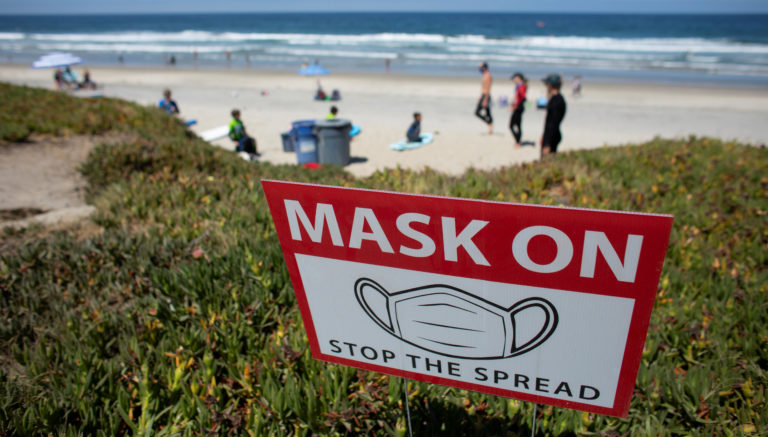Just when you thought COVID was a thing of the past, it’s back in the headlines—and not in a good way. While the world may have moved on emotionally, the virus hasn’t packed its bags. In fact, it’s making a noticeable comeback, and experts are warning us not to let our guard down.
According to recent data, COVID cases have more than doubled since January. From declining vaccine immunity to the rise of new variants, it’s a reminder that the pandemic’s shadow still looms over our lives.

The Numbers Don’t Lie: Cases Are Climbing Fast
Let’s talk facts. The UK Health Security Agency (UKHSA) just released fresh stats that should make you pause. The COVID “positivity rate” rose from 4.2% to 4.5% in the week ending April 6. That may seem like a small jump, but it adds up fast. This spike led to a 7% increase in COVID-positive hospital admissions across England.
To put that in perspective, the positivity rate in early January was just 2.2%, which meant only about 1 in 330 people were infected. Now? That number has doubled—and it’s still climbing.
Sure, it’s nowhere near the highs of the 2020 or 2022 surges, but that doesn’t mean we can brush it off. We’ve seen how fast this virus can spiral out of control.
Video: New COVID-19 variant causes cases to double, CDC says
Why the Sudden Rise? A Few Culprits Are to Blame
So what’s driving this latest uptick? It’s a mix of things.
First, vaccine protection fades with time. If your last booster was many months ago, your immunity might not be strong enough to fight off new variants. Second, seasonal changes—like colder temps and more indoor socializing—make it easier for viruses to spread.
And let’s not forget about the variants themselves. COVID keeps mutating, and some of the newer strains are more contagious, even if they aren’t necessarily more severe.
Booster Shots: Who Needs Them Most Right Now

Health officials aren’t just watching the numbers—they’re taking action.
In the UK, the spring booster program is already underway. The updated vaccine is available from April 1 to June 17, targeting high-risk groups. That includes:
- People aged 75 and older
- Residents of elder care facilities
- Those with weakened immune systems (ages six months to 74)
And yes, if you turn 75 on June 17, you’re still eligible—no need to wait for your birthday to roll around.
Still on the Fence About the Booster? Here’s What the Data Says

Some people wonder: Do boosters really help that much? In short—yes, they do.
According to UKHSA findings from the 2024 spring vaccine rollout, individuals who received the updated shot had a 40% lower risk of hospitalization from COVID-19 compared to those who didn’t. That protection can make all the difference, especially for older adults and immunocompromised folks.
Boosters don’t just protect you—they help reduce transmission, keeping communities safer overall.
Symptoms to Watch For: They’ve Shifted Over Time
One of the things that makes COVID tricky is that symptoms have evolved.
While we used to associate the virus with fever, cough, and loss of taste or smell, recent cases are showing a slightly different profile. Now, the most common signs include:
- Sore throat
- Cough
- Congestion
- Fatigue
- Occasionally, fever or loss of smell, though those are less frequent now
In other words, it can feel a lot like a cold or seasonal flu. That’s why many people don’t realize they’re infected until it spreads to someone else who’s more vulnerable.
Dr. Wylie Weighs In: It’s Not 2020 Again—But Stay Alert
Video: NJ sees surge in mini-wave of new COVID-19 variants
Leading health expert Dr. Wylie offered some level-headed insight. He’s not predicting another massive pandemic-level wave like in 2020—but he’s also not sugar-coating things.
According to him, the people most at risk right now are those who haven’t been recently vaccinated or infected. And just like with the flu, seasonal behavior (more indoor gatherings, less ventilation) can significantly increase transmission.
So no, it’s not time to panic—but it is time to stay informed and act smart.
Complacency Is the Real Threat Now
Let’s be honest—pandemic fatigue is real. Everyone’s tired of masks, lockdowns, and health alerts. But the virus doesn’t care how bored we are. It continues to evolve, and every time we get too relaxed, it reminds us it’s still hanging around.
Being aware doesn’t mean being afraid—it just means staying a step ahead. That means:
- Getting your booster if you’re eligible
- Staying home when you’re sick
- Practicing good hygiene
- Keeping a mask handy for crowded indoor spaces
Small actions today can help prevent big problems tomorrow.
Conclusion: A New Chapter, But the Same Virus

The world has come a long way since the early days of COVID. We’ve got better treatments, better vaccines, and better knowledge. But the virus hasn’t disappeared—it’s just evolved.
The current surge in cases is a reminder that we can’t get too comfortable. With positivity rates doubling, a growing number of hospitalizations, and new variants spreading, it’s time to listen to the experts, protect our communities, and stay vigilant without slipping into fear.


